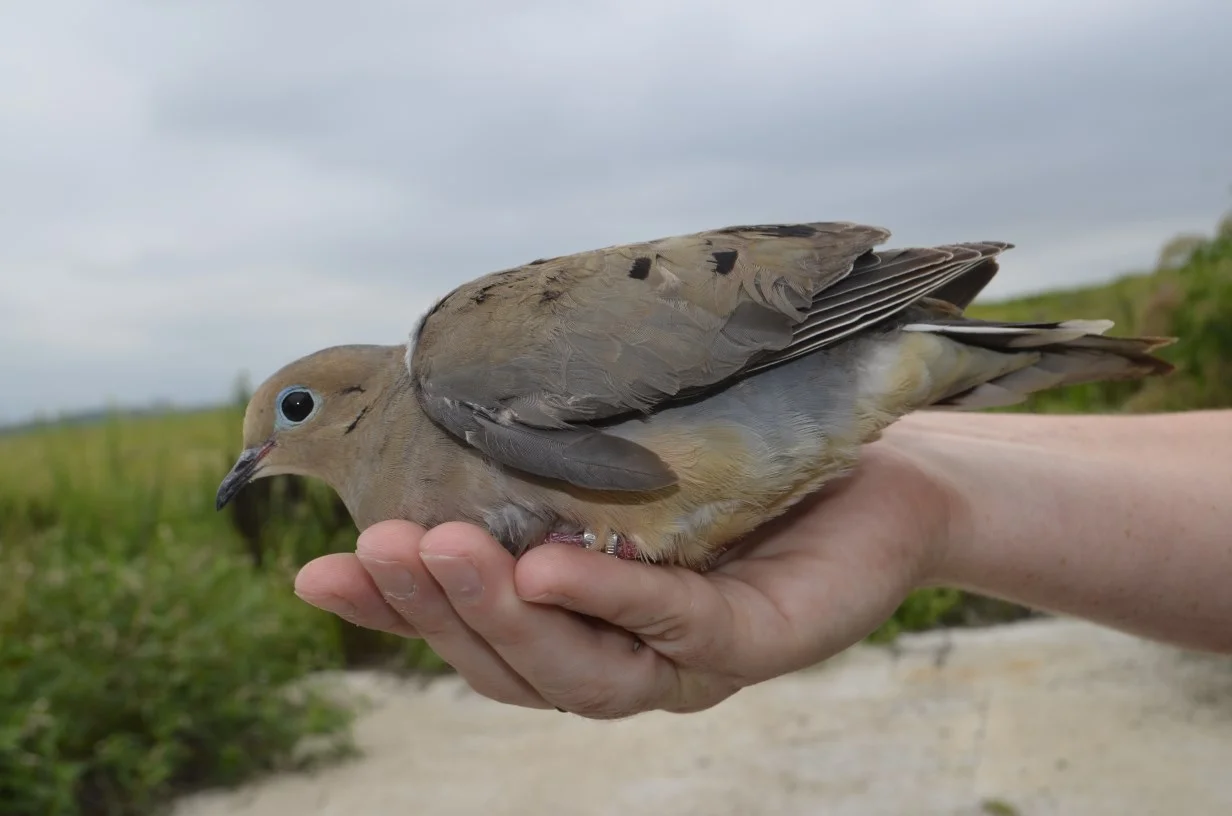Featured Sanctuary Bird: Mourning Dove
Mourning Dove. Photo by Mark Martin
Mourning doves are one of Wisconsin’s most abundant and widespread bird species, with the continental population estimated to be over 400 million. Goose Pond Sanctuary provides ideal habitat for mourning doves. They are common throughout the year and are one of our most numerous winter bird species. Counts over 100 are not uncommon.
They can nest in prairie restorations on the ground in addition to nesting in shrubs and the winter cover unit. In fall, the sunflower food plot attracts hundreds of migrating and resident doves. This year, Maia Persche is conducting weekly bird counts in our food plot and had a high count of 240 mourning doves on September 23rd. In winter, doves roost in the sanctuary's spruce and cedar winter cover unit and devour black oil sunflowers at the feeders.
We have helped Sara Kehrli, Columbia County Wildlife Biologist, band 456 doves at Goose Pond over the last decade. Adults are harder to trap than young and only 12% of the doves were adults. Doves are being banded by the Department of Natural Resources to make sure that doves are not being overharvested since mourning doves are the most abundant game bird in North America. Sara banded 386 doves as of 2015. The U. S. Fish and Wildlife Service reported that eight of these doves were reported by dove hunters (2.1% return rate).
Sam Robbins wrote in his 1990, Wisconsin Birdlife – Population and Distribution – Past and Present, that mourning doves are common summer residents and uncommon winter residents. This dynamic seems to be changing as wintering mourning dove populations appear to be increasing. Robbins reported that only 211 doves were found on the 1955 Christmas Bird Count (CBC), while at the 2014 CBC, 15,094 mourning doves were counted (36% below the average).
Sam also wrote that doves “migrating to warmer climates fall into two groups: one group winters in Georgia and Florida. A second group winters in Louisiana, Texas, and Mexico.” Of the eight birds that were recovered from Sara Kerhli’s banding efforts at Goose Pond, six were shot in Wisconsin and were 7 to 73 miles from Goose Pond. One bird was shot in Georgia (848 miles away) and a second bird was shot in Louisiana (904 miles away).
These birds are a major prey item for hawks. Cooper’s hawks are hunting the doves in the food plot and recently Sue saw a “cloud” of features in the yard after a flock of doves flushed from a predator. Plan a trip to see these elegant, graceful birds and more at our Goose Pond Sanctuary. Our food plot can be viewed from Kampen Road on the north side of the west pond.
By Mark and Sue Foote-Martin, Resident Managers, and Maddie Dumas, Land Steward, Goose Pond Sanctuary





